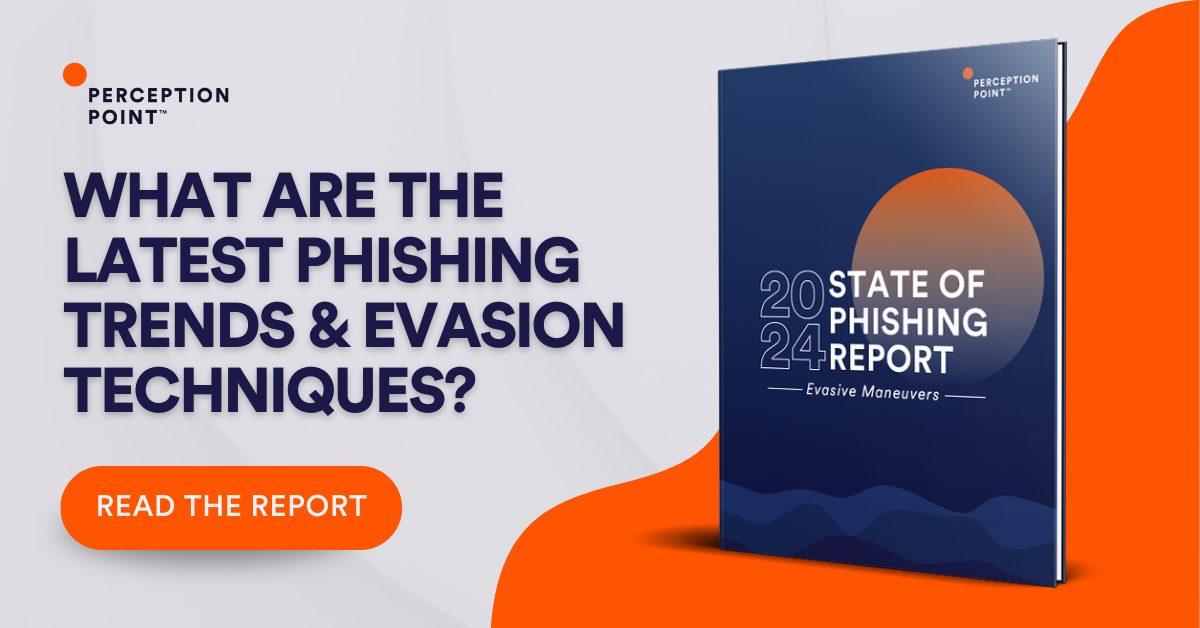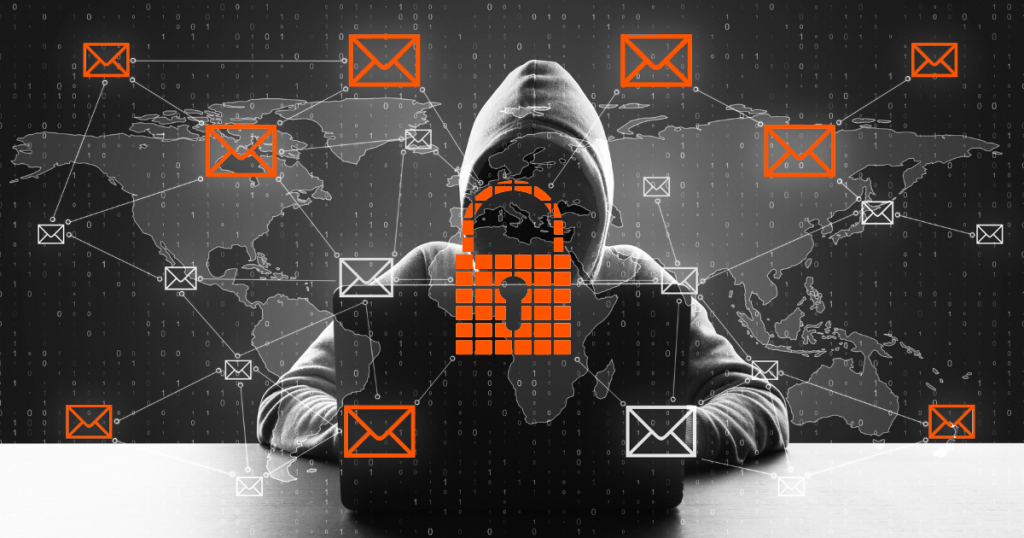What Is Phishing Protection?
Phishing protection refers to a set of technologies, policies, and practices designed to identify, block, and mitigate phishing attacks. These attacks deceive individuals into providing sensitive information by masquerading as trustworthy entities. The goal of phishing protection is to prevent unauthorized access to personal or corporate data, protecting against potential financial loss and data breaches.
Modern phishing protection strategies include email filtering, website authentication checks, AI-based detection, and user education. By analyzing email content for malicious links or suspicious attachments, verifying the authenticity of websites before allowing access, and leveraging generative AI technologies to identify sophisticated attacks, organizations can reduce the risk of successful phishing schemes.
In this article
Why Is Phishing Protection Important?
According to an IBM report, phishing is the initial attack vector in 41% of cybersecurity incidents. While phishing is often the first stage of a more complex attack, they can also cause damage on their own, leading to significant financial losses, data breaches, and damage to an organization’s reputation.
Protection against phishing is crucial because it serves as the first line of defense in preventing attackers from gaining access to sensitive information such as passwords, financial details, and confidential corporate data. By implementing robust phishing protection measures, organizations can significantly reduce their vulnerability to these attacks.
With the rise of remote work (almost a third of employees are working from home at least partially according to Forbes Advisor), the attack surface has expanded, making it more important than ever to secure all communication and collaboration channels. Phishing protection not only safeguards individual users but also protects organizational assets and customer data from being compromised, and ensures compliance with data protection regulations and standards.

Tal ZamirCTO, Perception Point
Tal Zamir is a 20-year software industry leader with a track record of solving urgent business challenges by reimagining how technology works.
TIPS FROM THE EXPERTS
- Deploy DMARC, SPF, and DKIM together
While many organizations implement SPF and DKIM, DMARC (Domain-based Message Authentication, Reporting, and Conformance) ensures that spoofed emails are rejected or quarantined. The synergy of these three protocols protects your domain from being exploited in phishing attacks. - Implement adaptive MFA based on risk levels
Instead of using the same MFA process for every login, implement adaptive MFA that adjusts based on risk factors like the user’s location, device, or the time of access. High-risk logins can trigger additional authentication steps, reducing the likelihood of compromised credentials being misused. - Sandbox external communication channels
Consider sandboxing external emails from your core network. This approach prevents phishing attacks from spreading or causing damage beyond the initial point of entry. - Conduct security training simulations and exercises
Engage in simulations and exercises to train employees how to recognize phishing and to be skeptical of unexpected or unusual communication, even from known contacts. Regularly refresh training with the latest phishing tactics to ensure ongoing vigilance.
Key Features of Phishing Protection Solutions
1. Email Filtering and Analysis
Email filtering and analysis focus on scrutinizing incoming messages to detect and block phishing attempts before they reach the end user. This process involves checking email headers, sender reputation, and analyzing content for malicious links or suspicious attachments. By employing advanced algorithms and pattern recognition techniques, email filtering systems can identify potential threats based on known phishing tactics and evolving attack strategies.
Sophisticated email analysis tools extend beyond basic filtering by incorporating machine learning to adapt to new phishing methods. These systems learn from historic phishing attempts, continuously improving their ability to distinguish between legitimate communications and potential threats.
2. Real-Time Link Analysis
Real-time link analysis is a vital feature of phishing protection, scrutinizing URLs in emails and web content the moment they are accessed. This process evaluates the safety of links by checking them against databases of known malicious websites and performing heuristic analysis to detect new threats. By analyzing links in real time, it prevents users from landing on phishing or malware-infected sites, effectively stopping attacks before they can start.
This technology often includes the capability to sandbox suspicious URLs, isolating them in a controlled environment to assess their behavior without risking the user’s device or network. This proactive approach not only blocks immediate threats but also contributes to a broader understanding of emerging phishing tactics.
3. Generative AI Detection
Generative AI detection in phishing protection leverages large language models (LLMs) to identify and neutralize phishing threats crafted through artificial intelligence. This approach is essential as cybercriminals increasingly use AI to generate convincing phishing content. By understanding the nuances of AI-generated texts, these detection systems can pinpoint subtle anomalies that differentiate malicious communications from legitimate ones.
The application of generative AI detection significantly enhances an organization’s ability to defend against sophisticated attacks that traditional methods might not catch.
4. Image Recognition
Image recognition technology in phishing protection can identify and mitigate advanced phishing attacks that use visual elements to deceive users. This capability extends beyond simple image detection, analyzing the context and content of images within emails and web content to identify potential threats.
By understanding how images are used in phishing attempts, such as fake login pages or brand spoofing, image recognition algorithms can effectively block malicious content before it reaches the user. The technology uses advanced algorithms to compare images against databases of known threats and legitimate brand assets. For example, slight alterations in a company’s logo used in an email scam can be identified through image recognition, alerting users to the fraudulent nature of the message.
5. Behavioral Analysis and Content-Based Analysis
Behavioral analysis in phishing protection focuses on identifying unusual patterns or anomalies in user behavior that may indicate a phishing attempt. This approach leverages machine learning algorithms to analyze various aspects of digital communication, such as the frequency, timing, and content of messages.
By establishing a baseline of normal behavior, the system can detect deviations that suggest malicious activity. This proactive detection enables organizations to identify potential threats before they escalate into security incidents.
Content-based analysis complements behavioral analysis by analyzing the substance of communications for malicious intent. It employs natural language processing (NLP) techniques to parse text for phishing indicators, including urgent language, deceptive URLs, or requests for sensitive information.
6. Multi-Factor Authentication
Multi-factor authentication (MFA) adds an essential layer of security by requiring users to provide two or more verification factors to gain access to resources, such as systems, networks, or applications.
This method significantly enhances protection against phishing by making it much harder for attackers to gain unauthorized access with stolen credentials alone. Even if a phishing attack successfully deceives someone into revealing their password, the presence of MFA can prevent further exploitation by requiring additional authentication that the attacker does not have.
7. Reporting and Alerting Mechanisms
Reporting and alerting mechanisms are integral to phishing protection, enabling organizations to promptly identify and respond to potential threats. These mechanisms work by generating alerts based on specific triggers, such as the detection of suspicious emails or unauthorized access attempts. They ensure that security teams are immediately informed about possible phishing incidents, facilitating swift investigation and response actions.
In addition, detailed reporting tools provide insights into the nature and frequency of phishing attempts targeting an organization. By analyzing these reports, security teams can identify patterns, assess the effectiveness of current protection measures, and adjust strategies accordingly.
8. Integration Capabilities
Integration capabilities allow phishing defense mechanisms to be incorporated into broader security systems, such as Security Information and Event Management (SIEM) tools, threat intelligence platforms, and incident response workflows. By facilitating data exchange and operational compatibility between different security technologies, integration ensures that phishing protection measures connect with existing security processes.
Effective integration also supports automation of response actions, streamlining the process of mitigating detected threats. This can include the automatic isolation of affected systems, blocking malicious URLs across the network, or initiating user verification procedures in response to suspicious activities.
Related content: Read our guide to phishing detection
Critical Steps to Protect Your Business From Phishing Attacks
1. Implement Anti-Phishing Software
Implementing anti-phishing software is a proactive measure businesses can take to fortify their defenses against phishing attacks. This software scrutinizes incoming emails, web content, and other digital communications for signs of phishing attempts.
By employing advanced detection algorithms, it identifies and blocks malicious links, attachments, and spoofed email addresses before they reach the user. The software operates in real time, providing immediate protection against known and emerging phishing tactics without requiring user intervention.
Additionally, many anti-phishing solutions offer customizable settings that allow organizations to tailor the level of protection based on their specific risk profile and security requirements. This allows businesses to achieve a balance between the need for security and uninterrupted email workflows.
2. Implement AI-Powered Email Security Solutions
Implementing AI-powered email security solutions is a strategic move to enhance phishing protection. These solutions utilize artificial intelligence to analyze email content, sender behavior, and communication patterns in real time. Advanced solutions use LLMs to detect sophisticated phishing attempts, including those leveraging generative AI, which traditional security measures might miss.
AI-powered solutions can also automate the response to detected threats, such as quarantining suspicious emails, blocking malicious senders, or even automatically sending responses to verify attacker intent. This automation reduces the workload on security teams and speeds up the mitigation process, minimizing potential damage.
3. Use an Advanced Browser Security Extension
There are browser security extensions that leverage textual and image recognition AI models, proprietary anti-evasion, and a patented sandbox, to instantly identify and prevent web-borne threats, such as evasive zero-hour phishing sites.
The anti-phishing technology in browser extensions uses image recognition models to detect logo impersonation, check login forms, evaluate brand favicons, etc.
4. Regularly Update and Patch Systems
Regular system updates and patching are crucial in defending against phishing attacks that exploit software vulnerabilities. Cyber attackers frequently target outdated systems with known security flaws. By ensuring that all software and operating systems are up to date, organizations can close these vulnerabilities, significantly reducing the risk of a successful attack.
This process involves routinely checking for and applying updates provided by software vendors, which often include security enhancements alongside new features and bug fixes. In addition to regular updates, implementing a robust patch management strategy is essential for maintaining system integrity against phishing threats.
5. Develop and Enforce Policies on Data Security
Developing comprehensive policies on data security is a foundational step in protecting against phishing attacks. These policies should outline acceptable use of company resources, data handling procedures, and protocols for reporting suspected phishing attempts. By establishing clear guidelines, organizations can minimize risky behaviors that lead to data breaches.
Enforcement of these policies through regular audits and disciplinary measures for non-compliance ensures adherence, creating a secure organizational culture. Enforcing data security policies also involves continuous education and training programs for all employees.
6. Backup Data Regularly
Regularly backing up data is a critical defense strategy against phishing attacks that compromise data integrity or availability. By maintaining up-to-date copies of important information in a secure, off-site location, organizations can ensure business continuity even in the event of a successful phishing scheme leading to data loss or ransomware infection.
Implementing an effective backup strategy involves scheduling frequent backups and testing them regularly to confirm their reliability. It’s essential to encrypt backup data and store it across multiple locations, including cloud services, to protect against physical and cyber threats. This multi-layered approach ensures that, regardless of how sophisticated or damaging a phishing attack may be, the organization can recover quickly.
7. Awareness Training and Phishing Simulations
Awareness training is a fundamental aspect of a comprehensive phishing protection strategy. Effective training programs educate employees on recognizing and responding to phishing attempts, enhancing their ability to avoid falling victim to these attacks. Training sessions typically cover identifying suspicious emails, understanding the tactics used by cybercriminals, and following proper reporting procedures.
Advanced training programs go beyond basic education, incorporating interactive elements such as phishing simulations. These simulations provide hands-on experience, allowing employees to practice identifying and handling phishing attempts in a controlled environment. By regularly updating training materials and simulations to reflect the latest phishing tactics, organizations can maintain a high level of vigilance and preparedness among their staff.
Prevent Phishing with Perception Point Protection
Perception Point is a leading provider of AI-powered threat prevention solutions that safeguard the modern workspace against sophisticated threats. The unified security solution protects email, web browsers, and SaaS apps. By uniquely combining the most accurate threat detection platform with an all-included managed incident response service, Perception Point reduces customers’ IT overhead, improves user experience, and delivers deep-level cybersecurity insights.
Deployed in minutes, with no change to the organization’s infrastructure, the cloud-native service is easy to use and replaces cumbersome, traditional point systems. Perception Point proactively prevents phishing, BEC, ATO, malware, spam, insider threats, data loss, zero-days, and other advanced attacks well before they impact the end-user.

Phishing protection refers to a set of technologies, policies, and practices designed to identify, block, and mitigate phishing attacks. These attacks deceive individuals into providing sensitive information by masquerading as trustworthy entities. The goal of phishing protection is to prevent unauthorized access to personal or corporate data, protecting against potential financial loss and data breaches.
Phishing is the initial attack vector in 41% of cybersecurity incidents. While phishing is often the first stage of a more complex attack, they can also cause damage on their own, leading to significant financial losses, data breaches, and damage to an organization’s reputation.
1. Email Filtering and Analysis
2. Real-Time Link Analysis
3. Generative AI Detection
4. Image Recognition
5. Behavioral Analysis and Content-Based Analysis
6. Multi-Factor Authentication
7. Reporting and Alerting Mechanisms
8. Integration Capabilities
1. Implement Anti-Phishing Software
2. Implement AI-Powered Email Security Solutions
3. Use an Advanced Browser Security Extension
4. Regularly Update and Patch Systems
5. Develop and Enforce Policies on Data Security
6. Backup Data Regularly
7. Awareness Training and Phishing Simulations
























